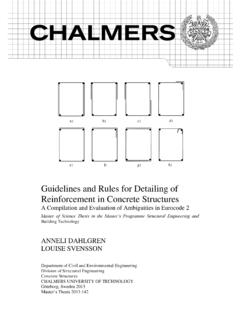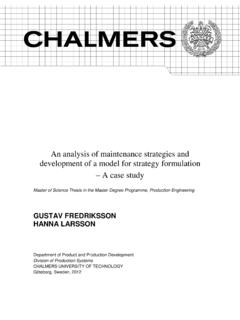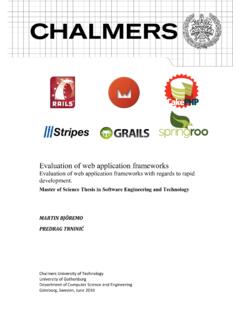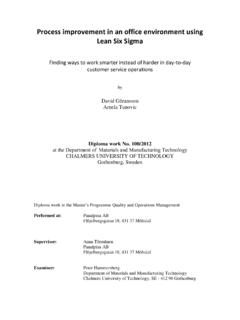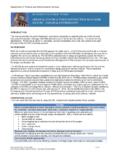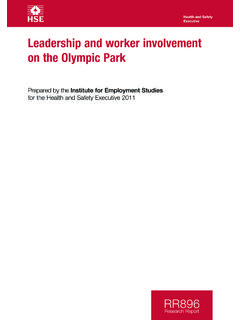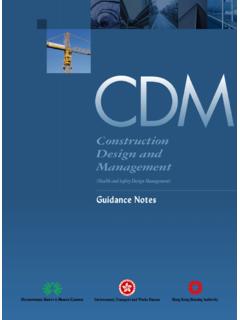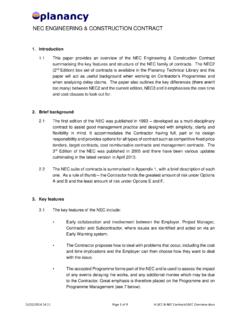Transcription of Early Contractor Involvement in Large Civil Engineering ...
1 Department of Technology Management and Economics Division of Service Management CHALMERS UNIVERSITY OF TECHNOLOGY G teborg, Sweden 2015 Master s Thesis E2015:063 Early Contractor Involvement in Large Civil Engineering Projects Implications for the Contractor s Business Model Master s Thesis in the Master s Programme Design and Construction Project Management KARIN BLAD MARKUS JOHANSSON MASTER S THESIS E2015:063 Early Contractor Involvement in Large Civil Engineering Projects Implications for the Contractor s Business Model Master of Science Thesis in the Master s Programme Design and Construction Project Management KARIN BLAD MARKUS JOHANSSON Department of Technology Management and Economics Division of Service Management CHALMERS UNIVERSITY OF TECHNOLOGY G teborg.
2 Sweden 2015 Early Contractor Involvement in Large Civil Engineering Projects Implications for the Contractor s Business Model Master of Science Thesis in the Master s Programme Design and Construction Project Management KARIN BLAD MARKUS JOHANSSON KARIN BLAD & MARKUS JOHANSSON, 2015 Examensarbete E2015:063/Institutionen f r Teknikens ekonomi och organisation, Chalmers tekniska h gskola 2015 Department of Technology Management and Economics Division of Service Management CHALMERS UNIVERSITY OF TECHNOLOGY SE-412 96 G teborg Sweden Telephone: + 46 (0)31-772 1000 a Chalmers Reproservice G teborg, Sweden 2015 I Early Contractor Involvement in Large Civil Engineering Projects Implications for the Contractor s Business Model Master of Science Thesis in the Master s Programme Design and Construction Project Management KARIN BLAD MARKUS JOHANSSON Department of Technology Management and Economics Division of Service Management CHALMERS UNIVERSITY OF TECHNOLOGY ABSTRACT Early Contractor Involvement (ECI)
3 Is a two-stage project delivery approach engaging contractors in the design phase. It is a new concept on the Swedish market for Large Civil works and as there are two Large upcoming projects using this delivery model, contractors are analysing what role ECI can have in their project portfolios. To support contractors in their decisions regarding ECI, as well as clients in their design of ECI, this thesis aims to identify factors that are decisive when a Contractor chooses to tender for an ECI project by investigating what effects ECI has on the Contractor s business model.
4 Empirical data was collected by interviewing 14 representatives for contractors (both Swedish and UK) and clients. The analysis discusses the results in relation to components in a business model framework. The thesis identified a number of decisive factors which concerned the Contractor s organisation, the procurement design and the contractual design. New competences need to be involved in the Contractor s tendering process, and the project delivery requires employees with a collaborative mindset. When designing the procurement route it is perceived as crucial that a project cost estimate is excluded from the tender document and that the fee is not given a too high weight.
5 Otherwise ECI risk losing much of its purpose as tendering costs increase and the fee becomes a dominant factor in the evaluation. A problem in relation to the Contractor s business model is the long lead time for the design phase, when the Contractor s turnover is low. This can be managed by beginning earlier with time critical works or sub-dividing the project into smaller phases. To create the right motivation and prevent opportunism, the size and the basis for contractors compensation also have to be carefully managed. By considering all these factors clients can offer a project which is attractive to contractors and in that way benefit from increased competition.
6 ECI projects can further improve the efficiency of the construction industry while providing more predictable revenues for the Contractor . Key words: Business model, Construction, Early Contractor Involvement , Incentives, Large Civil works, Project portfolio, Procurement, Two-stage tendering. II Early Contractor Involvement i stora anl ggningsprojekt Konsekvenser f r entrepren rens aff rsmodell Examensarbete inom masterprogrammet Design and Construction Project Management KARIN BLAD MARKUS JOHANSSON Institutionen f r Teknikens ekonomi och organisation Avdelningen f r Service Management Chalmers tekniska h gskola SAMMANFATTNING Early Contractor Involvement (ECI) r en metod f r att genomf ra projekt tv steg som involverar entrepren ren i projekteringsfasen.
7 Det r ett nytt koncept p den svenska marknaden f r stora anl ggningsprojekt och eftersom tv stora projekt planeras genomf ras med ECI analyserar nu entrepren rerna vilken roll ECI kan ha i deras projektportf lj. Denna uppsats syftar till att identifiera de faktorer som r avg rande f r entrepren rens beslut att l mna anbud p ett ECI-projekt genom att unders ka hur ECI p verkar entrepren rens aff rsmodell. 14 intervjuer genomf rdes med svenska best llare samt entrepren rer fr n b de Sverige och England. Resultatet analyserades i relation till teori om aff rsmodeller.
8 Ett antal avg rande beslutsfaktorer identifierades, som ber rde entrepren rens organisation samt utformningen av f rfr gningsunderlag och kontrakt. Entrepren rens organisation m ste anpassas s att andra kompetenser involveras i anbudsarbetet och projektgenomf randet kr ver medarbetare med h g samarbetsf rm ga. N r upphandlingen utformas r det viktigt att f rfr gningsunderlaget inte inkluderar en uppskattning av projektkostnaden och att arvodet inte ges alltf r h g vikt. Annars kar anbudskostnaderna och arvodet f r en avg rande roll i utv rderingen, vilket inneb r att ECI riskerar att f rlora stora delar av sitt syfte.
9 Ett problem i relation till entrepren rens aff rsmodell r de l nga ledtiderna i projekteringsfasen, d entrepren rens oms ttning r l g. Detta kan med f rdel hanteras genom att antingen b rja med tidskritiska arbeten tidigt eller dela upp projektet i mindre faser. Principerna f r entrepren rens arvode m ste analyseras noggrant f r att skapa r tt drivkrafter och undvika opportunism. Genom att verv ga alla dessa faktorer kan best llare erbjuda ett attraktivare projekt och d rmed ka konkurrensen. ECI kan ven f rb ttra effektiviteten i byggbranschen samtidigt som det erbjuder en stabil och f ruts gbar grund f r entrepren rens verksamhet.
10 Nyckelold: Aff rsmodell, Byggande, Early Contractor Involvement , Incitament, Stora anl ggningsprojekt, Projektportf lj, Upphandling, Tv -stegsupphandling. III Contents ABSTRACT I SAMMANFATTNING II CONTENTS III PREFACE V GLOSSARY VII 1 INTRODUCTION 1 Background 1 Aim and problem statement 2 Scope and limitations 3 Method 3 2 FRAME OF REFERENCE 5 Collaborative contract forms 5 Phases and effects of Early Contractor Involvement 5 Procurement and tendering 7 Commercial arrangements 7 Fixed-price and cost-based contracting 7 Target price and pain/gain share 8 Other incentives and bonuses 9 Business model framework 10 Theoretical summary 11 3 METHODOLOGY 13 Feasibility study 13 Main

